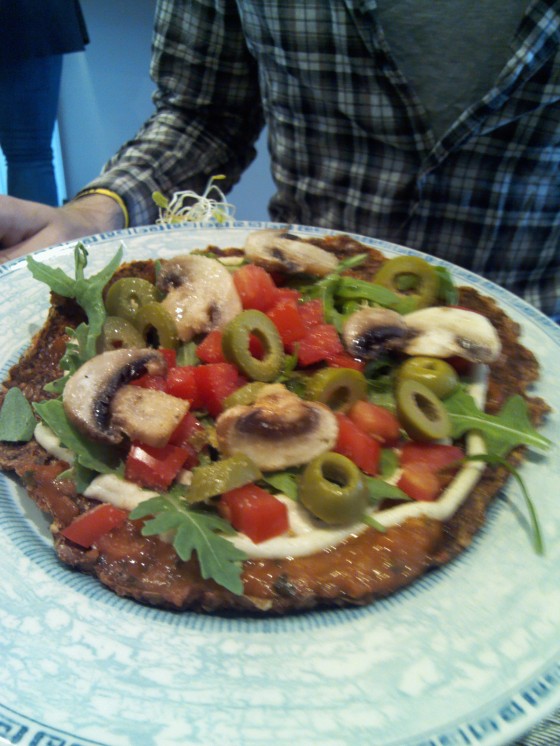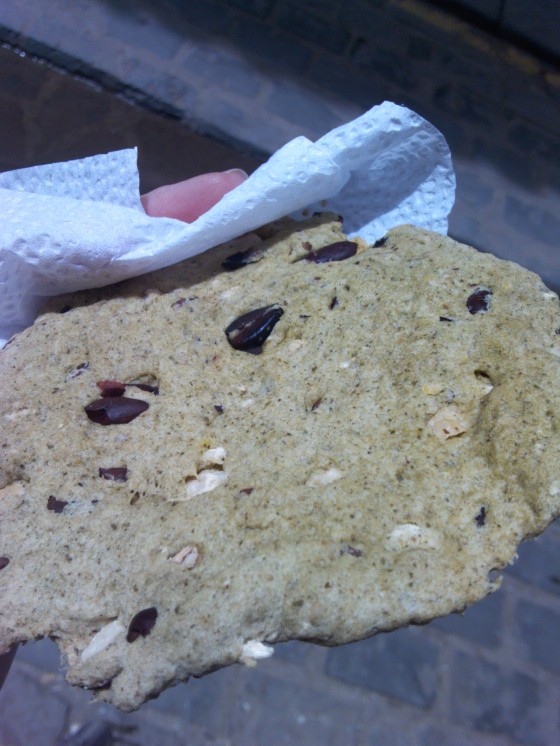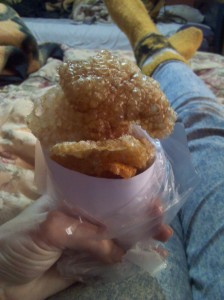So Peru was a bountiful country as far as food goes (it is pretty awesome in general as well). I tried a lot of food i’ve never thought about eating before and there were only a few things I couldn’t try. Great news, book your flight now!
Local cuisine
Cuy, probably better known to you as Guinea pig, is much feted local fare, and naturally gluten free, clearly. It violated my food work: pleasure ratio (too much attacking a carcass, not enough meat) for it to be a favourite, but it certainly is interesting.
Likewise alpaca meat won’t be added to my staple diet, despite being low fat and tasty tasty. I just can’t reconcile eating it with my love of the animals. Especially when I found out only the ones younger than 18 months are suitable to eat. Hypocritical maybe, but everyone has a line.
Ceviche on the other hand I could eat for days. Raw seafood marinated in lime juice, and normally a selection of spices, and it is so delicious. We held off trying any until we reached the cost so it would be super fresh and I think it was worth it. No gluten risk so far.
Another big favourite of ours is yuca (or mandioca) which is abundant here, and great fried. Here you do need to check if there is any flour to make it crispy, or in the oil.
Piccarones, sweet potato donuts, are awesome, especially with the syrup that comes with them. Traditionally and properly made they are gluten free, but you need to check. We saw street stands in Lima that were selling ‘piccarones’ that were just regular donuts.
Mazamorras is a berry corn purple jelly thing that is served hot as street food with arroz con leche (rice pudding). Super sweet but really nice. If you see it you should definitely give it a try.
Another interesting street food is called anticuchos. This is normally a skewer of beef hearts, topped with a potato. Super good (I tried it not knowing what it was, but very very tasty).
Pollo broster, or chicharron de pollo, is fried chicken, like KFC actually, but almost always the flour is not wheat flour. A lovely Peruvian woman we stayed with told me mandioca flour is best, and in a restaurant they used chuño (potato flour). It was really good, dirty food.
There is giant white corn here that really nice, eaten from a lady on the street with a hunk of cheese. I don’t know why, just eat it.
Peruvian restaurants
Chifas are Chinese restaurants, or at least fusion Chinese Peruvian places. They are every where but largely you need to avoid them. The reason? I’m mean. No, not really. Sillao, as soy sauce is called here, is in pretty much every dish. Obviously you can enquire in the restaurant, as we did in Chiclayo and had fantastic safe food. But it is a rarity. Arroz chaufa is on most cheap restaurant menus, and is more or less egg fried rice, and again liberally doused in soy sauce. Ask to see the brand they use and check it yourself if you really want to try it. (The same goes for lomo saltado).
Pollerias are on every corner. They are roasted chicken shops. They are your answer to cheap safe food in Peru. Once you check there is no flour in the seasoning (never found any, but I like to always check to be safe), you’re all clear as they almost always only serve roasted chicken, rice and chips. I didn’t say it was healthy!
Individual restaurants I’ll cover separately, as there are a couple of stand outs that deserve the time.
Supermarkets and labeling
Pah! Pretty much no products for coeliacs unless you find the biggest supermarket in Lima. You can normally find rice noodles somewhere, due to the aforementioned chifas, but as your hostel is unlikely to have a kitchen you can only look at them in the packet!
There is nearly no awareness of gluten, so you really are on your own. The people however are really friendly and kind, so they may think you’re crazy, but they’ll help you, so always always ask.
Final advice: try every fruit you see and don’t recognise; they’re all good (even sancayo, the incredibly sour cactus fruit- go to Colca Canyon), go for the Easter for the special foods, if you really need a chocolate fix my go-to was ‘triangular’ but it’s cheap and nasty.
And that’s it. Come to Peru!










